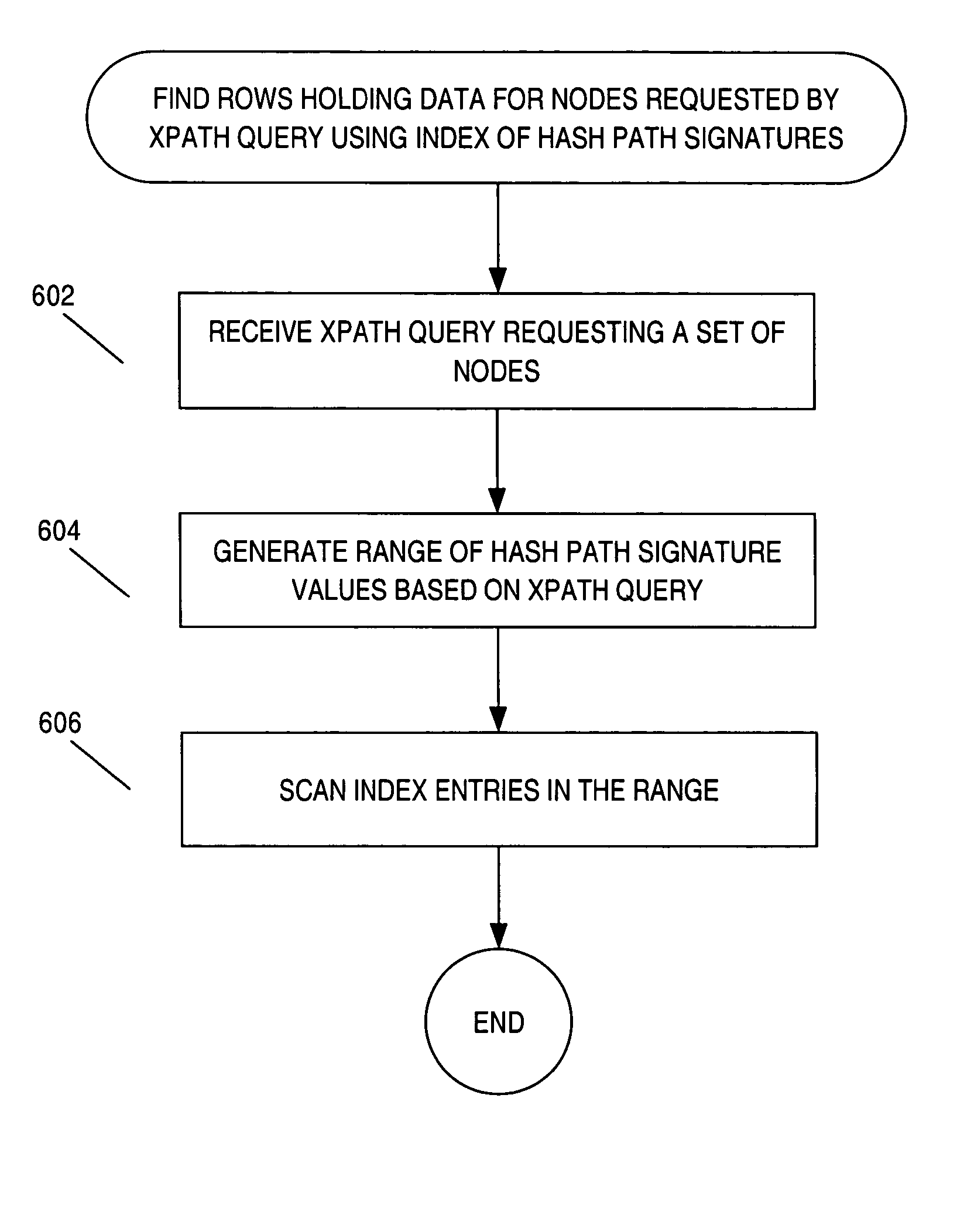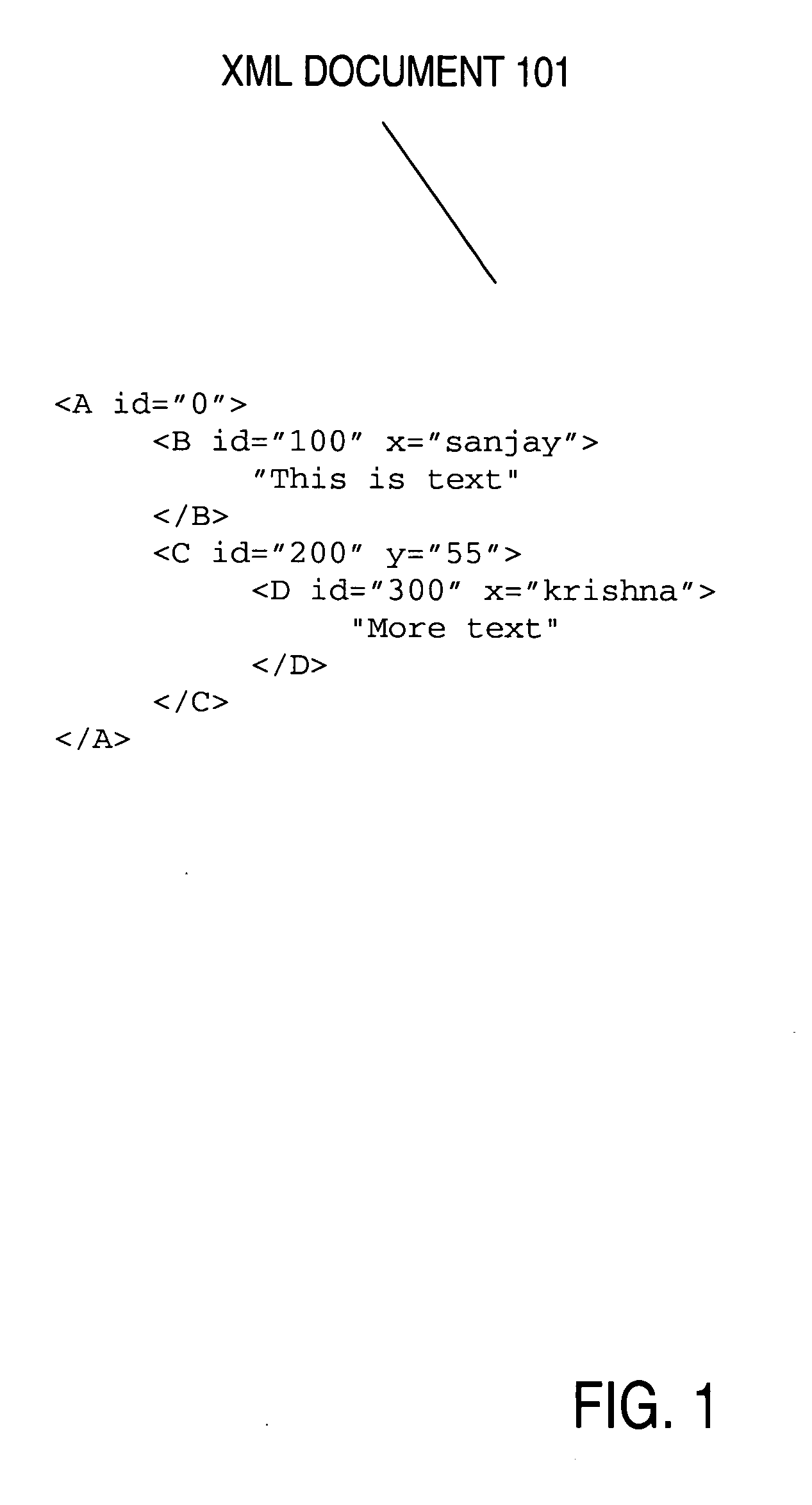Storing XML documents efficiently in an RDBMS
a technology for storing xml documents and rdbms, which is applied in the field of storing and accessing data in a database, can solve the problems of inefficient retrieval of data, inability to store large xml documents in memory, and high processing costs, and achieve the effect of reducing the amount of memory needed to store the in-memory representation of large documents
- Summary
- Abstract
- Description
- Claims
- Application Information
AI Technical Summary
Problems solved by technology
Method used
Image
Examples
Embodiment Construction
[0034] A method and apparatus for efficiently storing and accessing an information hierarchy is described. In the following description, for the purposes of explanation, numerous specific details are set forth in order to provide a thorough understanding of the present invention. It will be apparent, however, that the present invention may be practiced without these specific details. In other instances, well-known structures and devices are shown in block diagram form in order to avoid unnecessarily obscuring the present invention.
[0035] Described herein are techniques for efficiently storing and accessing information hierarchies stored in a relational or object-relational database system. A path signature, which can be similar to a pathname, is stored in a database system in association with data for the node identified by the pathname. For example, a path signature identifying an element is stored in a row that holds data for the element. To retrieve data for a hierarchical query...
PUM
 Login to View More
Login to View More Abstract
Description
Claims
Application Information
 Login to View More
Login to View More - R&D
- Intellectual Property
- Life Sciences
- Materials
- Tech Scout
- Unparalleled Data Quality
- Higher Quality Content
- 60% Fewer Hallucinations
Browse by: Latest US Patents, China's latest patents, Technical Efficacy Thesaurus, Application Domain, Technology Topic, Popular Technical Reports.
© 2025 PatSnap. All rights reserved.Legal|Privacy policy|Modern Slavery Act Transparency Statement|Sitemap|About US| Contact US: help@patsnap.com



